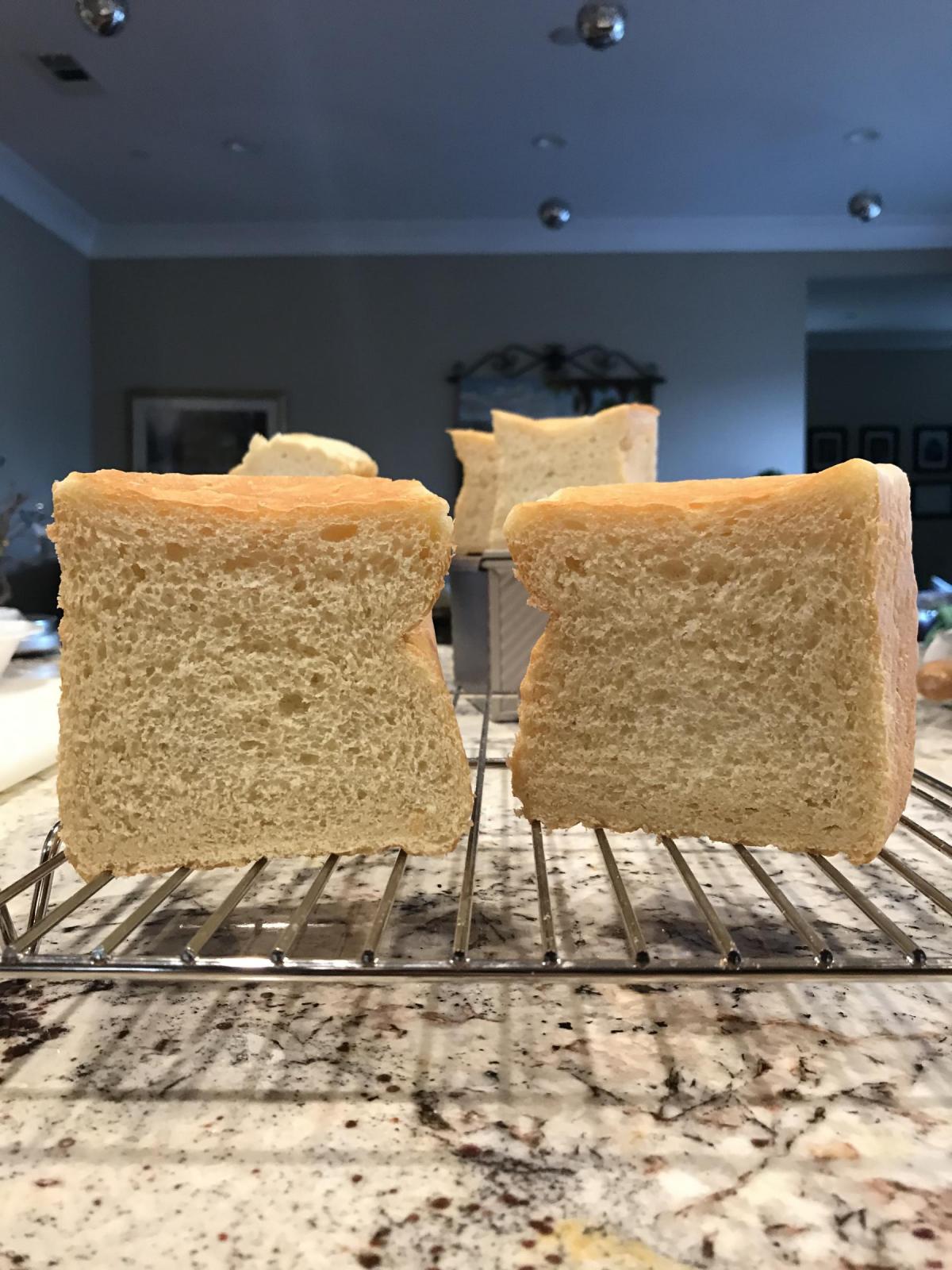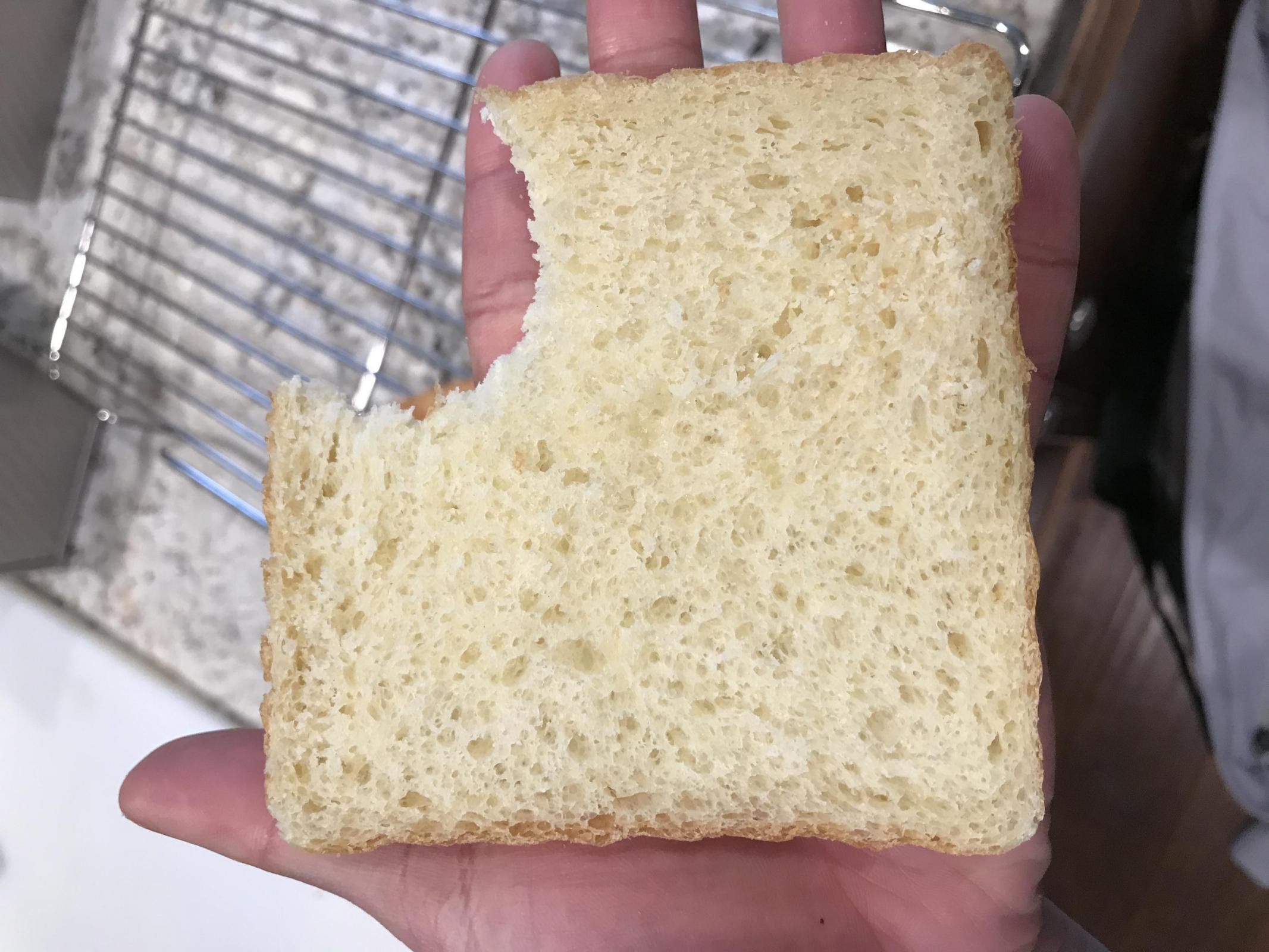
Pullman Loaf - Chalky Taste and Dense Bottom Layer
Hi everyone!
I recently started baking as an outlet to my stressful days :). I was wondering if you could help me with a few issues and questions I have.
My current goal is to obtain a very soft, fluffy, semi-chewy bread.

Ingredients -
The loaf attached was made using AP flower (didn't want so much chew) and 70% hydration using whole milk, with the addition of butter, sugar, salt, and dry active yeast.
Process-
I made sure to knead thoroughly to mix and develop the dough. I let the loaf proof twice for about 1.5 and 1 hour respectively. I pulled out the loaf once the internal temperature reached 195-200F. Then I let it rest overnight before I cut and tried the bread.
Challenges/Issues Faced -
- There is a chalkiness or floury-ness once I started chewing.
- There's a dense small layer at the bottom of the loaf.
Questions -
With regards to issue 1, I was wondering, is the chalkiness coming from an under cooked loaf? If so, is internal temperature not a reliable indicator of a finished loaf?
With regards to issue 2, I've been reading that it could possibly be under-proofing, over-proofing, or just heavy handed handling of the dough. I can't seem to figure it out, as this dense bottom layer issue will happen randomly every once in a while.
I've included a closer shot of the bread. Sorry for the bite that I chomped off :). Also, it should be noted that the bottom is the top in the picture.
Any help would be greatly appreciated!
Thanks,
Bu



What about baking it for another 10 minutes until it reaches 210° F?
Could try baking it sooner, maybe 15 minutes sooner.
I will give it a test and see what the result of an internal temp of 210F is like. Do you think this would result in a less moist, soft crumb?
Do you think the loaf is over-proofed, that's why it has that dense bottom layer?
What type of sugar? white refined table sugar? confectioner's sugar? turbinado? raw sugar? Confectioner's sugar could be the guilty party.
Whole milk and butter might be too much fat... just a guess.
Fresh milk or reconstituted from powdered milk? Reconstituted milk from powder can taste chalky to some.
---
Here's a thought: Fat tends to prevent flour from absorbing water. Flour particles with more fat than water may taste chalky.
So whatever flour particles are contacted by the fat in the milk and butter [update:] "_before_ they get water", will tend to absorb less water, and those less hydrated flour particles could possibly contribute to the chalky taste.
Suggestions, ideas:
- mix flour completely with milk before adding butter, as fat in butter may impede the flour's absorption of water in the milk.
- and/or, use half milk and half water (less fat overall), again adding butter after the milk/water.
- and/or, use 1% fat or 2% fat milk instead of whole (3.5% fat) milk (less fat.)
- and/or, heat milk (and water if used) to 72-75 F to promote absorption of the milk's water into the flour, before the butter gets to the flour.
--
Are you using regular salt, or low-sodium salt?
--
Are there any other ingredients that you did not mention? Baking powder? Baking soda?
--
Has your flour reached the expiration date?
Thank you for the insightful information! I will take these notes and adjust for next time :).
To answer some of your questions, I used white table sugar, regular salt, and forgot to mention that I added one egg. No other ingredients were used. The flour I'm using hasn't hit the expiration date yet.
I will definitely try and let the flour soak up as much milk and see how the resulting texture/taste turns out. The milk and yeast mixture is usually warm when I add it. I wonder if it's the butter that's causing the issue.
Would you happen to know how well of an indicator internal temperature is? do you think the loaf could possibly be under baked?
Thanks :)
I am a whole-wheat baker, so I can't speak to what internal temp an enriched (sugar, butter, milk) white flour loaf should be.
Are you using real butter, or margarine? (Some folks in the US still refer to margarine as butter).
--
If you want to post your full formula along with procedures, other sandwich bread makers will be able to help more.